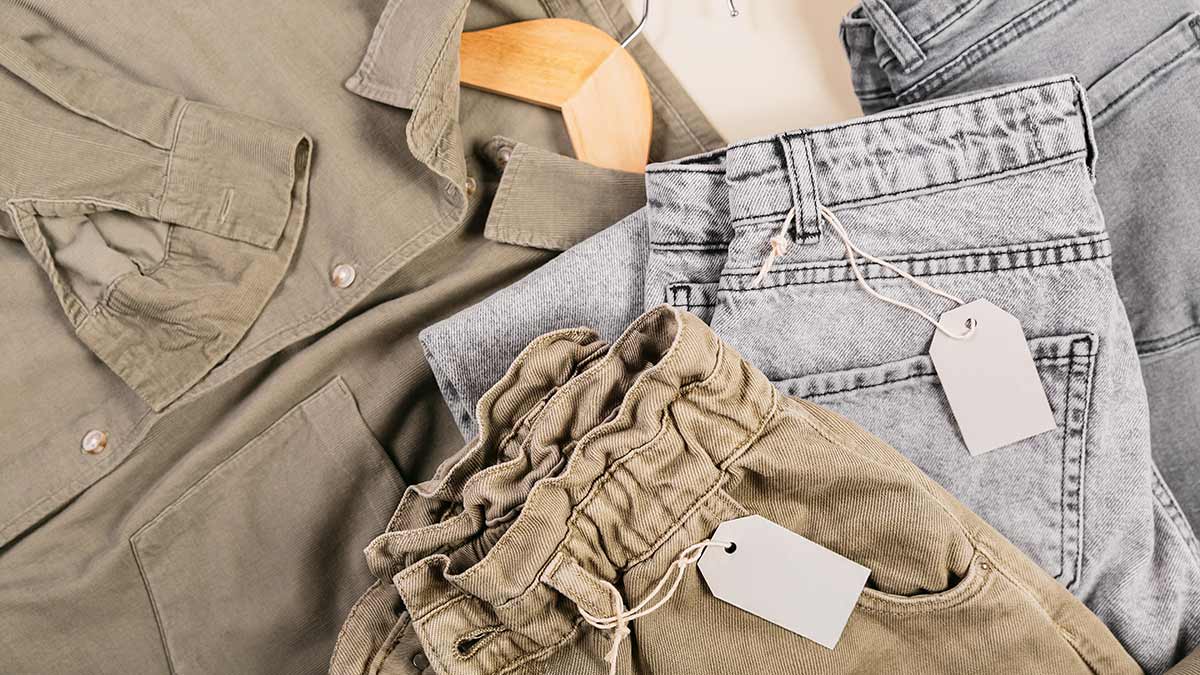
For shoppers, there’s no way to know what these chemicals are because brands aren’t required to disclose this information on clothing labels. Leonas says that the U.S. regulates the import of garments with certain chemicals and dyes used during manufacturing. Some of them, like those in finishes that repel flames, wrinkles, and water, you’ll want to keep on your clothes. The quality of the garment will determine if these beneficial chemicals are lost during laundering. “But typically, all of these loose chemicals that would easily transfer to the skin or to other clothing are going to come off at the first laundering,” she says.
Buying clothing made from natural fibers doesn’t mean that no chemicals were used in the manufacturing process. Researchers in Spain tested clothing made from both natural and synthetic fibers for the presence of formaldehyde, one of the many chemicals used in the production of clothing. The levels found were below European Union standard limits, but in 5 of the 12 categories of clothing tested, those made from organic cotton had higher levels than regular cotton. The good news is that after laundering and retesting, there was no trace of formaldehyde in any of the samples they tested.
It’s important to wash new baby clothes, Leonas says, because a baby’s skin is thinner than an adult’s, and chemicals can be absorbed more easily. “In fact, my original research when I was a doctoral student was on agricultural workers and pesticide penetration through their clothing,” she says. “And one of the things we found in those studies was that farmers would come in and they’d pick their kids up and hug them, and the farmer might not get pesticide poisoning but the child would because that pesticide would be on the garment.”
But residual chemicals from the manufacturing process aren’t the only reason to wash your clothing before you wear it for the first time. Leonas says a lot of the clothes we buy in the U.S. arrive from overseas. On their journey to the stores we buy them from, they are potentially exposed to a number of different things that could be lingering on them. “They go through a very long and complex supply chain, and the apparel components come from all over the world to the factory that sews them, and then that factory sends them to a distribution center, which eventually gets to the consumer,” she says. “And so throughout all of this, they’ve gone through a lot of hands, a lot of people have handled them and touched them.” Along the way, the items could be picking up dirt, fungi, or even insects. After they’re in stores, people touch garments and try them on, too, adding more hands to the already long list that touch your clothing before you do.
Clothing produced in the U.S. has a shorter route from factory to store, so it could be exposed to fewer hands and creepy crawlers on the way. Once in stores, though, there are just as many opportunities for store employees and consumers to touch and try them on.
One final reason to give your new fit a wash? The dye in some clothing could bleed onto other fabrics or your furniture if it isn’t properly fixed (the term used in the industry for how attached a chemical is to a fabric).
And it isn’t just new clothing that Leonas recommends washing when you bring it home. Bedding like sheets, pillowcases, and blankets should receive the same treatment before you make your bed, along with towels and washcloths.
Source link






